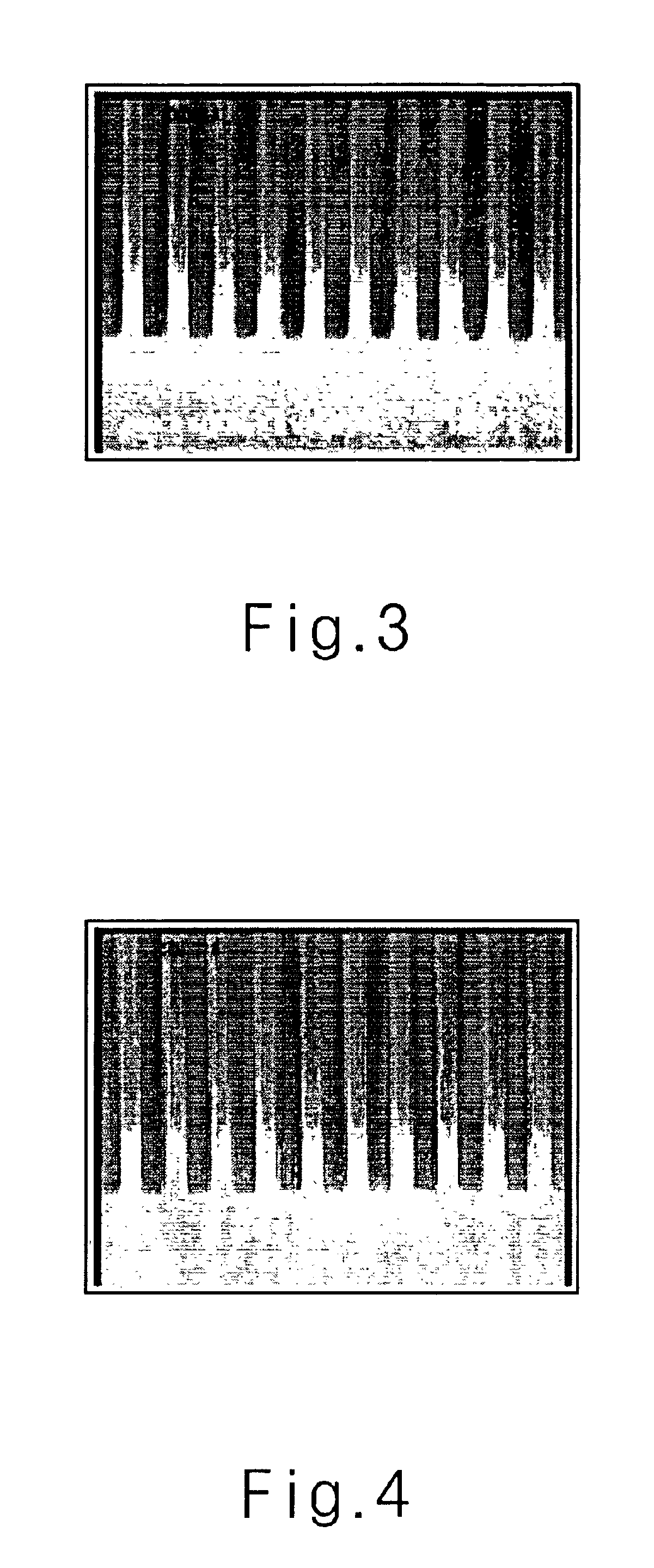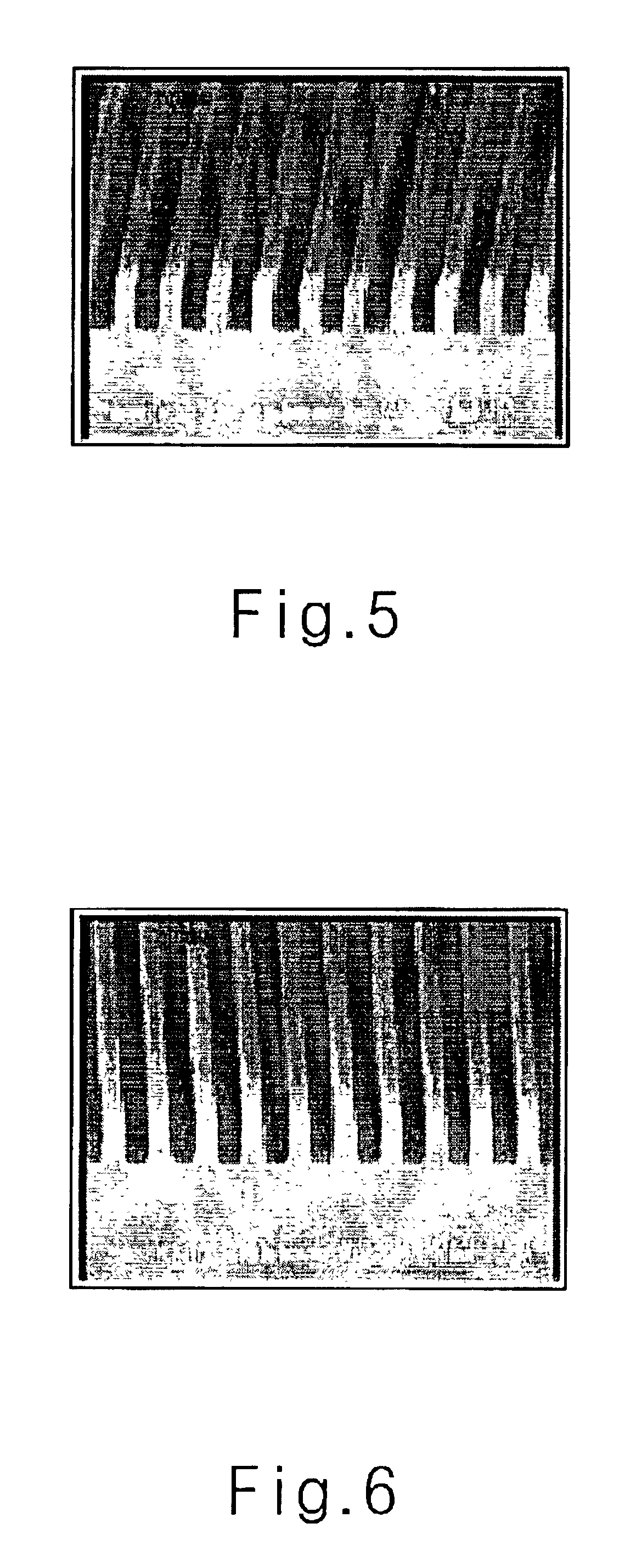Photoresist monomers, polymers and photoresist compositions for preventing acid diffusion
a technology of photoresist monomers and polymers, applied in the direction of photosensitive materials, instruments, photomechanical equipment, etc., can solve the problems of deteriorating the roughness of the line edge of the pattern, observing damage to the pattern such as top loss or slope, and deteriorating the sensitivity of the photoresist composition
- Summary
- Abstract
- Description
- Claims
- Application Information
AI Technical Summary
Benefits of technology
Problems solved by technology
Method used
Image
Examples
example 1
Synthesis of Compound of Formula 3a
[0082]To 500 mL of anhydrous tetrahydrofuran was added 5-norbornene-2,2-dimethanol(0.1 mole) and di(ethyleneglycol)di-p-tosylate(0.1 mole). The resulting solution was slowly added into the 2 L of 3-neck flask having LiOH(0.21 mole), and the resulting solution was reacted at room temperature for about 24 hours.
[0083]Thereafter, the resulting mixture was distilled to remove the solvent, and the residual mixture was extracted in 1 L of ethyl acetate. Then the layer of ethyl acetate was washed with water several times, dehydrated, filtered and distilled, thereby obtaining the compound of Formula 3a (yield: 54%).
example 2
Synthesis of Compound of Formula 3b
[0084]To 500 mL of anhydrous tetrahydrofuran was added 5-norbomene-2,3-dimethanol(0.1 mole) and di(ethyleneglycol)di-p-tosylate(0.1 mole). The resulting solution was slowly added into the 2 L of 3-neck flask having LiOH(0.21 mole), and the resulting solution was reacted at room temperature for about 24 hours.
[0085]Thereafter, the resulting mixture was distilled to remove the solvent, and the residual mixture was extracted in 1 L of ethyl acetate. Then the layer of ethyl acetate was washed with water several times, dehydrated, filtered and distilled, thereby obtaining the compound of Formula 3b (yield: 62%).
example 3
Synthesis of Compound of Formula 3c
[0086]To 500 mL of anhydrous tetrahydrofuran was added 3,6-endomethylene-1,2,3,6-tetrahydrophthaloyl chloride(0.1 mole) and di(ethyleneglycol) (0.1 mole). The resulting solution was slowly added into the 2 L of 3-neck flask having LiOH(0.21 mole) and triethylamine(0.2 mole), and the resulting solution was reacted at room temperature for about 24 hours.
[0087]Thereafter, the solid was filtered off, the resulting mixture was distilled to remove the solvent, and the residual mixture was extracted in 1 L of ethyl acetate. Then the layer of ethyl acetate was washed with water several times, dehydrated, filtered and distilled, thereby obtaining the compound of Formula 3c (yield: 74%).
PUM
| Property | Measurement | Unit |
|---|---|---|
| temperature | aaaaa | aaaaa |
| wavelength | aaaaa | aaaaa |
| temperature | aaaaa | aaaaa |
Abstract
Description
Claims
Application Information
 Login to View More
Login to View More - R&D
- Intellectual Property
- Life Sciences
- Materials
- Tech Scout
- Unparalleled Data Quality
- Higher Quality Content
- 60% Fewer Hallucinations
Browse by: Latest US Patents, China's latest patents, Technical Efficacy Thesaurus, Application Domain, Technology Topic, Popular Technical Reports.
© 2025 PatSnap. All rights reserved.Legal|Privacy policy|Modern Slavery Act Transparency Statement|Sitemap|About US| Contact US: help@patsnap.com



